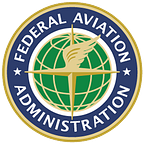Outsmarting Murphy’s Law
By Rebekah Waters, FAA UAS Integration Office
It’s a beautiful day — not a cloud in the sky! You’re ready to fly. What could go wrong? According to Murphy’s Law, quite literally anything. If it can go wrong, it will go wrong. I have come up with a solution, which I’ve affectionately named Rebekah’s Law: if you are prepared for everything that could go wrong, when it does, you’ll be ready.
When I pack for a trip, I think about every aspect of that trip and try to envision every single thing that could go wrong. If I’m going to the beach, I pack drops for swimmer’s ear, sunscreen and aloe for sunburn, and baking soda for jellyfish stings. When I go camping, I pack calamine lotion for poison ivy, bug spray, tweezers for ticks, and rain gear even if the forecast calls for sun. In the end, this slightly suppositious approach might not guarantee that I have a great trip, (and may only result in heavier luggage) but it’s a really good tactic when it comes to flying drones.
There are many things that could go wrong while flying a drone, such as lost link, battery issues, and system failures. That’s why it’s important to think about and be able to mitigate every potential risk to your operation before you lift off. Before you launch, have you tried to think of everything that could go wrong? Do you have a plan in place to handle anything that Murphy’s Law might throw your way? If not, I recommend some metaphorical over-packing.
Here are some things to think about before you take off:
- Airspace/Operating Environment: How can the risk to people on the ground or other aircraft in the air be reduced? Can you avoid densely populated areas and dense airspace? Can you avoid adverse weather? Can you avoid areas where GPS and radio signals are degraded?
- Aircraft Risk: Have you conducted a safety analysis of your drone? What damage would it do if it crashed? Does it employ a parachute or other mitigation that reduces its impact? Did you follow all manufacturers’ maintenance instructions? Is your firmware updated? Did you preflight your aircraft? Do you have a pre-programmed response to lost-link, lost GPS, and geo-fence boundary break? Did you ensure the drone’s battery was charged? Did you ensure the command-and-control link was adequate?
- Operator: What type of operation are you planning? What is your flight path? Can you route your aircraft to limit air and ground risks if something malfunctions? Are you familiar with the regulations or laws (e.g. part 107, part 91, 49 U.S.C. section 44809 you are operating under? Are you familiar with your aircraft systems and software? Did you check the airspace using the B4UFLY App?
Risk considerations are linked to the complexity of your operation. A simple daytime operation in class G airspace, below 400 feet and conducted within visual line of sight, may only require a short safety checklist. More complex operations require more rigorous risk identification and mitigations. For more complex operations, you may consider using a Safety Management System (SMS) that helps identify and mitigate risks based upon the complexity of your operation. Part of your SMS might be a Safety Risk Management (SRM) process that helps you to take an in-depth look at your operation, to identify potential hazards, and make a plan to assess the severity and likelihoods of the hazards to ensure the risk levels are reduced to acceptable levels.
So whatever operation you are planning, just remember Rebekah’s Law: prepare for everything that could go wrong and you won’t be surprised when it does. Have a safe flight!
Rebekah Waters is a senior communications specialist in the FAA’s UAS Integration Office.
